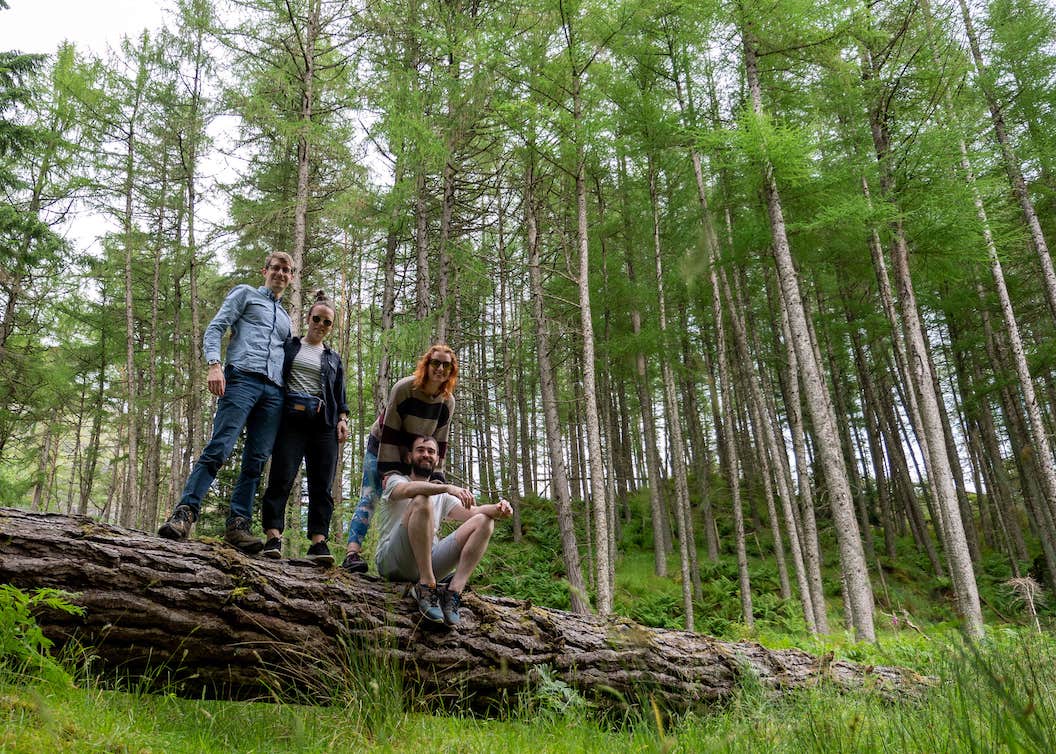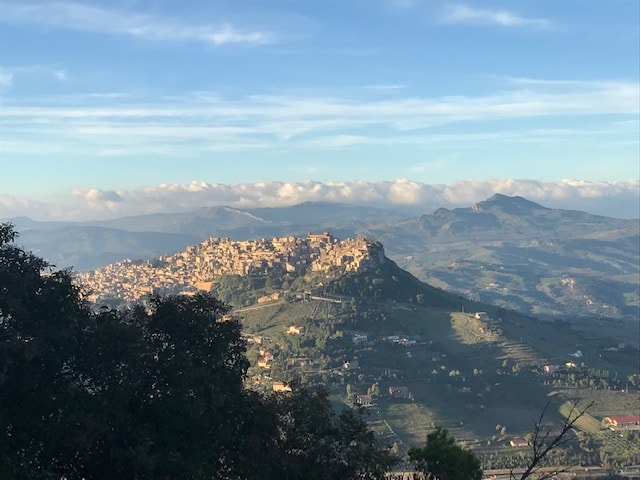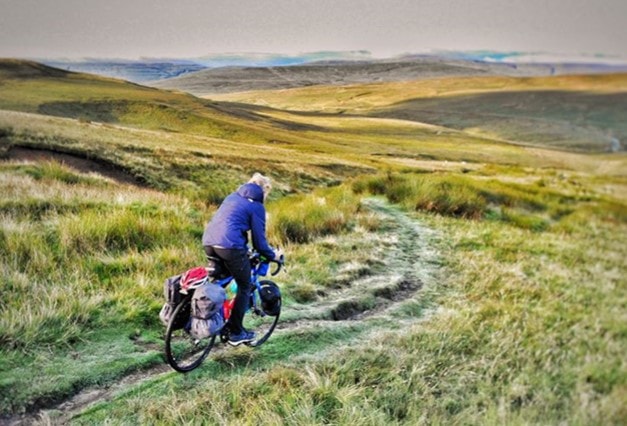From the city life of Edinburgh, Glasgow and Aberdeen to Ben Nevis and the wildness of the Highlands, Scotland’s riches are begging to be explored.
The country is famous for its spectacular landscapes of lochs, glens, mountains and dramatic sea cliffs, with the west coast in particular offering a unique desolate beauty. For wildlife enthusiasts, there’s no better place to spot birds, seals, porpoises and dolphins, and perhaps even a killer whale or basking shark. Travelling to Scotland without flying is simple, and an experience in itself, with slow travel offering time to soak up the country’s breathtaking scenery en route. It’s also easy to get around once you’ve arrived, whether you’re travelling by car, bicycle or public transport, or using the extensive network of ferries which are an invigorating way to explore the hundreds of offshore islands. Here are five accounts detailing just a glimpse of what Scotland has to offer.
Jane Cullum, by public transport around Scotland
Travelling around Scotland by rail, bus and ferry is easy and inexpensive. It’s best to book bus/coach tickets in advance, especially in the high season, and definitely ask the local people for advice on places to visit.
In early October I took the train from Edinburgh to Inverness, stopping in Pitlochry along the way – a lovely little Victorian town in Perthshire with lots of character. The Moulin Inn is just a short walk from the town centre, a fantastic little pub with great food, a real log fire, nice staff and no annoying music! The town is dotted with walks of varying lengths and one of my favourites took me across the river to the art centre/cinema. Here you can sit and admire the trees changing colour from the huge windows in the cafe.
From Inverness I took the Kyle Line train to the Kyle of Lochalsh. The last 15 minutes of the journey as the train approaches Plockton must count among the most beautiful in Europe, with the line following the coast of Lochcarron, overlooking little boats in the harbour and mountains receding into the distance. I’d recommend spending some time in this lovely village and joining one of Calum's famous nature watching boat trips* to view seals, seabirds and dolphins in the clear, deep waters. I also walked to Coral Beach, about a mile and a half from Plockton village. It’s a fairly straightforward walk along the beach itself but is accessed by steep steps and a bit of a rocky scramble. I was lucky enough to have the whole beach to myself for a couple of hours and it was one of the most beautiful, peaceful places I’ve ever been to.
From the Kyle of Lochalsh you can get a coach across to Skye (buy a ticket in advance as coaches can get booked up quickly). Local buses go around the top part of the island – for timetables, visit the tourist information office in Portree. You can also get a day ticket to hop on and off and visit some of the main landmarks like the Old Man of Storr.

In the sheltered south of Skye, the landscape changes from the dramatic black and red Cuillins to more gentle, rolling hills. I took the bus from Portree to Isleornsay where I had lunch in the excellent traditional An Praban bar, part of the hotel Eilean Iarmain. The hotel sits on the shore of a natural harbour with beautiful views across the Sound of Sleat to the mountains of the mainland.
"In the sheltered south of Skye, the landscape changes from the dramatic black and red Cuillins to more gentle, rolling hills."
From Armadale in the south of Skye I caught the ferry to Mallaig, then the train across to Fort William. The line from Mallaig to Fort William is the most stunning train journey I’ve ever been on, with mist-covered mountains, high waterfalls, lochs, and a crossing of the famous Glenfinnan viaduct (tip: the normal diesel train costs much less than the touristy Harry Potter one and you see exactly the same scenery!). From Fort William I took the bus to Oban, which is well worth a visit, especially for the Oban Chocolate Company on the seafront which has big squashy sofas and really excellent hot chocolate. From Oban, you can travel with CalMac ferries across to Mull, Iona and the islands beyond, which I plan to do on a future trip. I just had time for a short day trip across to Lismore Island which is a peaceful antidote to the traffic and busyness of the town.
Travelling by local transport is by far the loveliest way to travel. You get to spend time admiring the scenery instead of the unrolling tarmac, and it gives you a real opportunity to connect with local people, who are among the friendliest in the world and who are rightly proud of their lovely country.
*Calum's boat, the Sula Mhor, was wrecked in the February storms earlier this year. He's currently looking for a new one so keep an eye on his Facebook page, 'Calum's Seal & Dolphin Trips', or website for updates.
Claire Stocks, cycling in the Outer Hebrides
There is nothing more exciting than starting a trip right from your front door – no taxi to the airport, no boarding queues, no traffic jams or motorway monotony. Instead, just you and the open road, and everything you need on your back, or your bike rack.
Despite being 70 miles out to sea, the Outer Hebrides are accessible without a car and are arguably more enjoyable and certainly cheaper without one (you can get a foot passenger island hopper ticket for as little as £25). We took the train from Manchester to Oban, the ‘Gateway to the Western Isles’ and our gateway to the Hebridean Way. It's a cycling route that takes you along a chain of up to ten islands (often several in one day), from Barra in the south to Lewis in the north; 300km along some of the most stunning, tranquil and enjoyable cycling in the UK, possibly Europe. Only the last two isles, Harris & Lewis, are hilly, so if you’re blessed with a tailwind (the prevailing wind is south to north), it’s a breeze to pedal. We did the trip over nine days in June and took our time, with plenty of stops for coffee and cake and to explore areas we liked further.
"There is nothing more exciting than starting a trip right from your front door – no taxi to the airport, no boarding queues, just you and the open road."
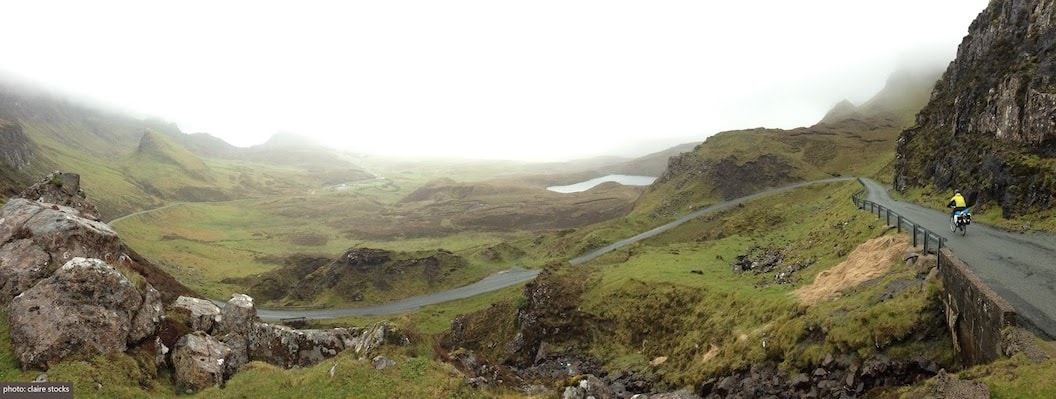
Each island is distinct in its own special way, from cute little Barra with its rocky coves, to super flat South Uist which is more water than land. But the peach has to be Harris – an unforgettable place, whichever route you choose. The eastern road twists and turns through a landscape of heathery rock outcrops past little sheltered lochans and hidden dells, where tiny white-washed hamlets and harbours nestle beneath the wind. The western road is a string of jaw-dropping beaches, with white sands and crystal clear seas, such as the world-famous Luskentyre. I recommend planning enough time to dawdle on both; include at least one night at this splendid hostel run by a former fisherman.
There were so many highlights from the islands: the wild otter sightings and the curious 12-foot basking shark that swam alongside our ferry across the Sound of Harris; camping in the Machair, a grassy plain teeming with wildlife on the west shore of South Uist; the sun setting over the wild North Atlantic; the friendly Hebridean folk; the arts and crafts – Harris in particular is home to a thriving artist community; the fresh fish and shellfish; and the train ride to and from the Scottish west coast via the West Highland Line, one of the finest rail journeys in the world, never mind the UK.
One of the best things about living in Europe is how easy it is to travel like this – we have a vast area accessible by train, making car-free holidays not only easy, but a joy.
"A great thing about living in Europe is how easy it is to travel like this – we have a vast area accessible by train, making car-free holidays a joy."
Claire Stocks is a writer and environmental activist.
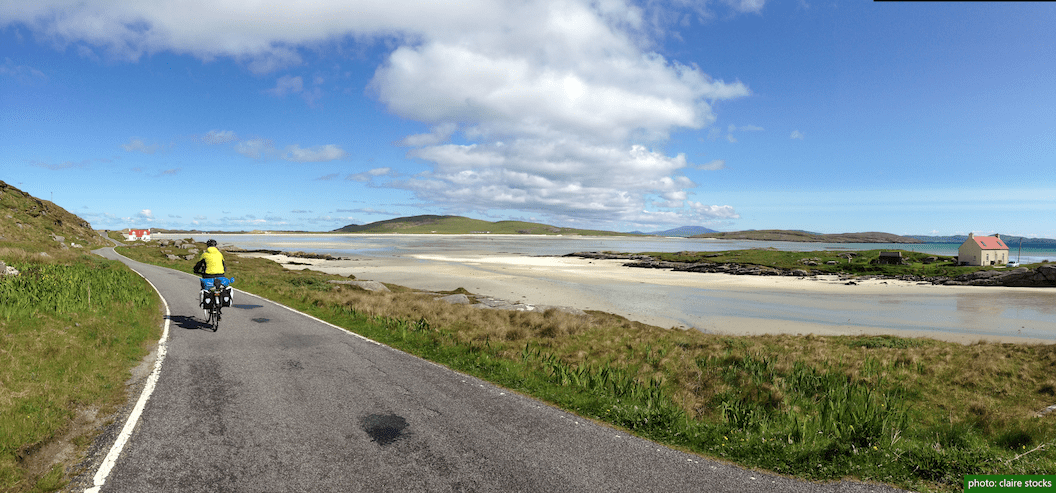
Kate Bullock, driving around Easter Ross and Wester Ross
My husband and I have been to Scotland several times, before and since we were married. I worked as an au pair on the Isle of Mull and Rupert's family had many holidays there. Since discovering Rupert's strong ancestral links to Scotland – his great-great-great grandfathers emigrated from Scotland to Jamaica – we've been more often.
We drove to Scotland in May 2019 to research my husband's ancestry and to visit a college friend that we haven't seen for about 20 years, who lives near Brora, north of Inverness on the east coast. Given that the trip required visiting out of the way places, we chose not to go by train. We stopped at Moffatt on the way up and back, a charming little town with a bustling high street and a great B&B. The journey up, especially once you're over the border, is fascinating everywhere you look. Some of the most peaceful and beautiful drives were over Dornoch Firth, Cromarty Firth and Moray Firth, which are little sea inlets crossed by bridges.
The east coast of Scotland is often overlooked in favour of the more dramatic, mountainous west coast, but the east coast is just as stunning with its acres of golden sandy beaches and wide open river mouths. These are excellent spots for wildlife; four ospreys flew over our heads at Embo beach, just north of Dornoch, and dozens of seals basked on sandbanks at low tide on Loch Fleet.
"The east coast of Scotland is often overlooked in favour of the dramatic, mountainous west coast, but it is just as stunning with its acres of golden sandy beaches and wide open river mouths."
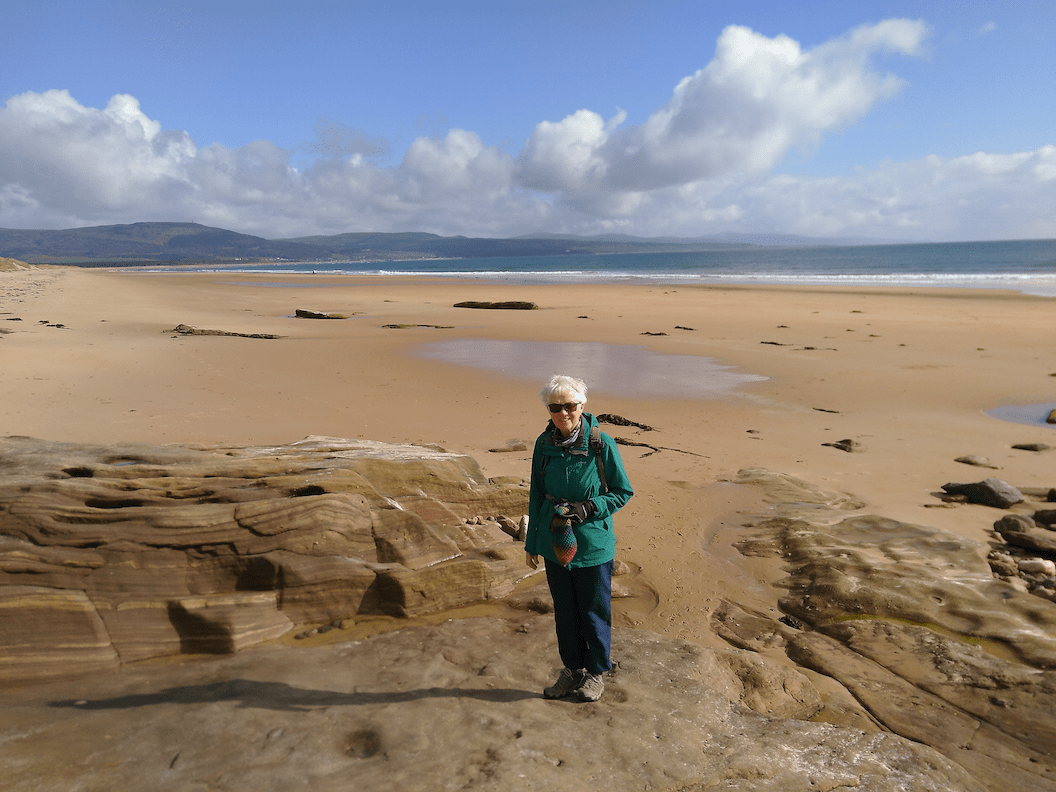
We visited the Dornoch and Dunrobin castles, the former of which is now a hotel. Dunrobin is an impressive building with fairytale turrets and is best viewed across Loch Fleet. It is the home of the Sutherland family from whom my husband is descended.
Inland from Dornoch is the picturesque Croick Church, where crofters who'd been turfed off their property in the notorious ‘clearances' sheltered; you can still see the names of some of them scratched into panes of glass. Our investigations took us across to Wester Ross; there’s little here by way of amenities, which is part of its appeal. But even so, there are plenty of places for great coffee and scones; the Perfume Studio near Aultbea on the west coast near Ullapool is particularly wonderful, as were Inverewe Gardens.
The most amazing wildlife encounters in this part of Scotland were with cuckoos. In May, hundreds of them can be heard in every valley on the west coast. We were woken by one several nights in a row calling very loudly outside our bedroom. I didn’t expect to have to shout “shut up!” to a cuckoo at 2 am!
In Mellon Udrigle on the west coast, the white sand beaches were virtually empty. Although the weather was wonderful, the sea was very cold so we put on our wetsuits. This was fortunate as we came across some friendly jellyfish! The scenery in this remote and quiet place really takes your breath away, with spectacular views of the mountains in the distance.

The last time we flew was 28 years ago when a friend paid for us to visit him in Seattle. I absolutely hated the 13-hour flight. It was only because I needed to return to my 3 children aged 4, 9 and 11 that I got back on the plane. I thought I would have to overcome my flying fears in order to properly travel again, but my husband started to read environmental books such as 'How We Can Save the Planet’ by Mayer Hillman and 'Six Degrees’ by Mark Lynas, which also made me think. We decided that we need never use air travel again and we don't feel deprived in any way.
Rupert's uncle, a journalist who has travelled the world, says Scotland is the best place anywhere. Although you’d want to avoid the midge season, it is extremely beautiful and the history is written on the landscape. Even in the rain, Scotland is so atmospheric and it impacts you deeply. Why would you go anywhere else?
Christiane Lellig, travelling around Orkney with two teenage boys
‘Can we go to Orkney once?’ That was unexpected. I looked at my son and slowly answered, ‘Sure…’. Somewhere, he had read that you can see the Northern Lights in Orkney. And orca of course – killer whales – though that hadn’t sparked his fantasy quite as much. After many years of camping holidays in Dorset and Wales, I thought it was a brilliant idea for a holiday with teenage boys, even though we’d be fairly unlikely to see the Northern Lights in the summer.
The boys knew they were in for a long train journey the minute they proposed the trip – for most of my adult life I’ve been critical of flying for ‘inland travel’ for environmental reasons so there was no way I’d organise flights to get us there. It’s so much more relaxing and comfortable to travel by train, so this trip would be an ‘expedition’, a slow journey that gradually takes body and mind through the changing landscape rather than a quick dash into a different world. I already knew it was a beautiful train journey from London to Edinburgh, and was keen for my sons to experience this, too, but as we tracked along the east coast they were far less interested in the landscape than I was.
After a night in Inverness we continued with ScotRail towards Thurso, tracing the coast at first then heading inland between the peaks of the eastern Highlands. Travel at its best. The train brushed through trees as it stopped at the tiny villages, catapulting us into a different world with a different pace.
"It’s relaxing and comfortable to travel by train: a slow journey that gradually takes body and mind through the changing landscape rather than a quick dash into a different world."
Thurso welcomed us with sunshine and a very friendly backpackers host who had organised a family room with en-suite bathroom for us. Glancing at our heavy rucksacks, he shook his head at our plan to walk to the ferry port, and organised a cab to take us to Scrabster the following morning. We arrived at the harbour under light blue skies with the gentle looking sea bashing against glowing rock formations with noticeable force. It was one of those moments you’re likely to remember for the rest of your life.
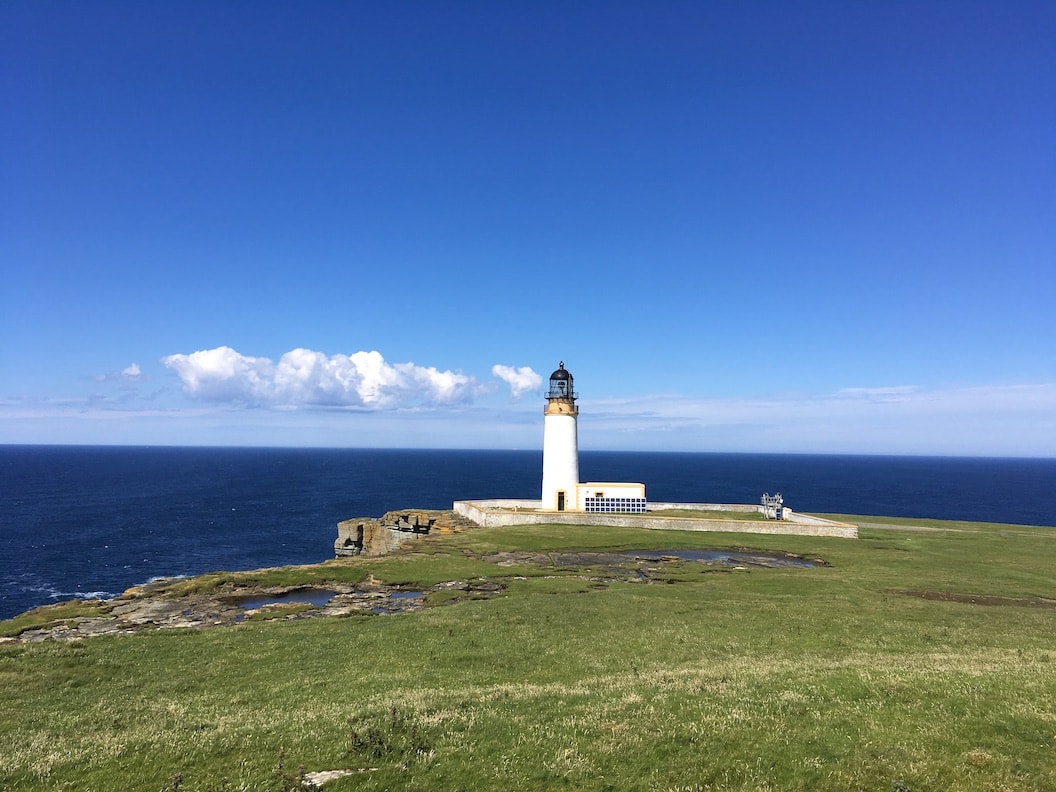
The ferry journey from Scrabster to Stromness ranks among the most beautiful experiences of the trip; we glided away from the mainland towards Hoy, passing ‘The Old Man’ sea stack and glimpsing porpoises, with everyone on board excited at the prospect of spotting dolphins or even better, orcas! As we rounded the tip of Hoy the view opened up, with several of the islands and the Norse architecture of Stromness coming into view. The town found a place in our hearts the minute we stepped ashore.
There followed several days of exploring Mainland by bike, on foot, and using the friendly bus service which worked a treat. We rode to Skara Brae, the ‘buried’ village, and the Ring of Brodgar standing stones, all under large skies and a rolling landscape of sea, lochs and fields of birds. A highlight was watching seals and a pod of dolphins play in the bay at Birsay.
The northern islands of Westray and Papa Westray were next, via ferry from Kirkwall, and we passed between the numerous other islands that make up the archipelago – firmly on our list for another trip. Papay has a close-knit community who seem open to new arrivals; even just temporary ones are immediately encouraged to join the weekly coffee mornings in the church hall where allegedly you will meet the entire village. It is a fascinating place, and one all three of us found difficult to leave after little more than two days.
An early morning walk through misty landscape full of low flying birds and archaic looking cormorants (dragons, really) took us back to the ferry port and we began our long journey home. Having picked up a copy of ‘The Outrun’, an autobiography of Orcadian writer Amy Liptrot, my head and heart stayed on the islands long after we had left.
We will definitely be back one day; there are plenty of islands still to discover, and plenty of places we missed. And of course, perhaps next time we will see those elusive Northern Lights or finally spot some orcas.
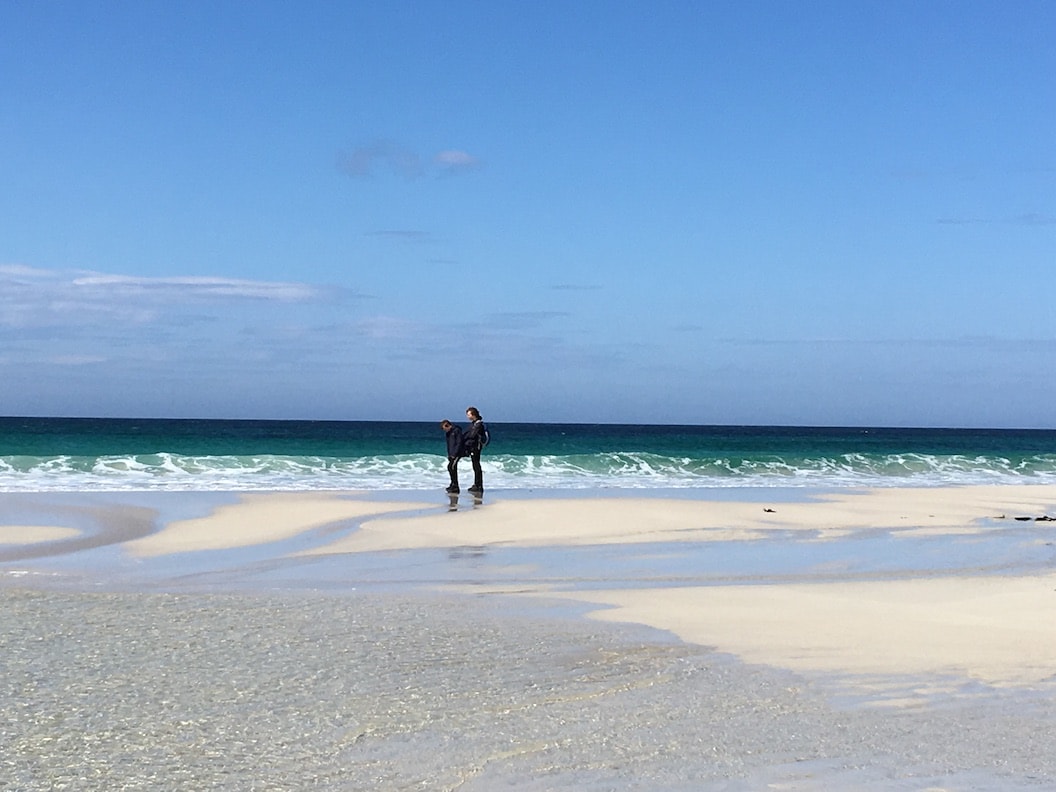
Ali Hood, hiking in Glen Coe
Giving up flying was the next logical step in my efforts to reduce my carbon emissions. When I started to reduce my waste and live more sustainably I thought travelling would be the one 'cheat' activity I could maintain as normal, but as time passed and things seemed to be getting more pressing, my boyfriend and I gradually became more open to reducing and eventually stopping flying.
Not flying hasn’t felt like a restriction: the more flight-free trips I do, the more I want to do. This is how I ended up travelling up to Scotland with some friends, in search of some time away from London. For nature and mountains, Scotland was the obvious choice.
Travelling by car is the best option for me – having the condition M.E., or Chronic Fatigue Syndrome, means that public transport can be exhausting (all those changes) and I often need to lie down, which I can do in the car.
"Not flying hasn’t felt like a restriction: the more flight-free trips I do, the more I want to do."
After spending nearly a week meandering up the country via the Lake District and Loch Awe in Argyll, we arrived in Glencoe, a place of dramatic proportions. Sculpted by volcanic eruptions and ancient glaciers, the scenery was guaranteed to be breathtaking, and driving along the edge of Loch Linnhe, a vast sea loch that leads to the Great Glen, with mountains on both sides and thick woodlands at the foot of Glen Coe, did not disappoint. We pitched our tents among gnarled trees and lush ferns in the heart of the Glen as dusk fell, discovering the true magnitude of our surroundings the next morning as the mist lifted to reveal the River Coe a stone’s throw away and mountains looming either side.
It promised to be the ultimate adventure, with plenty of hiking, climbing and kayaking, though I knew my friends would be doing more of everything than I could. But in the end, one of the highlights for everyone was a gentle walk along the Lochan trails – a forest walk at the foot of the Glen – where we strolled among trees dripping with moss and moisture, ferns, fungi and streams, and found a vast colony of tiny frogs in the undergrowth.
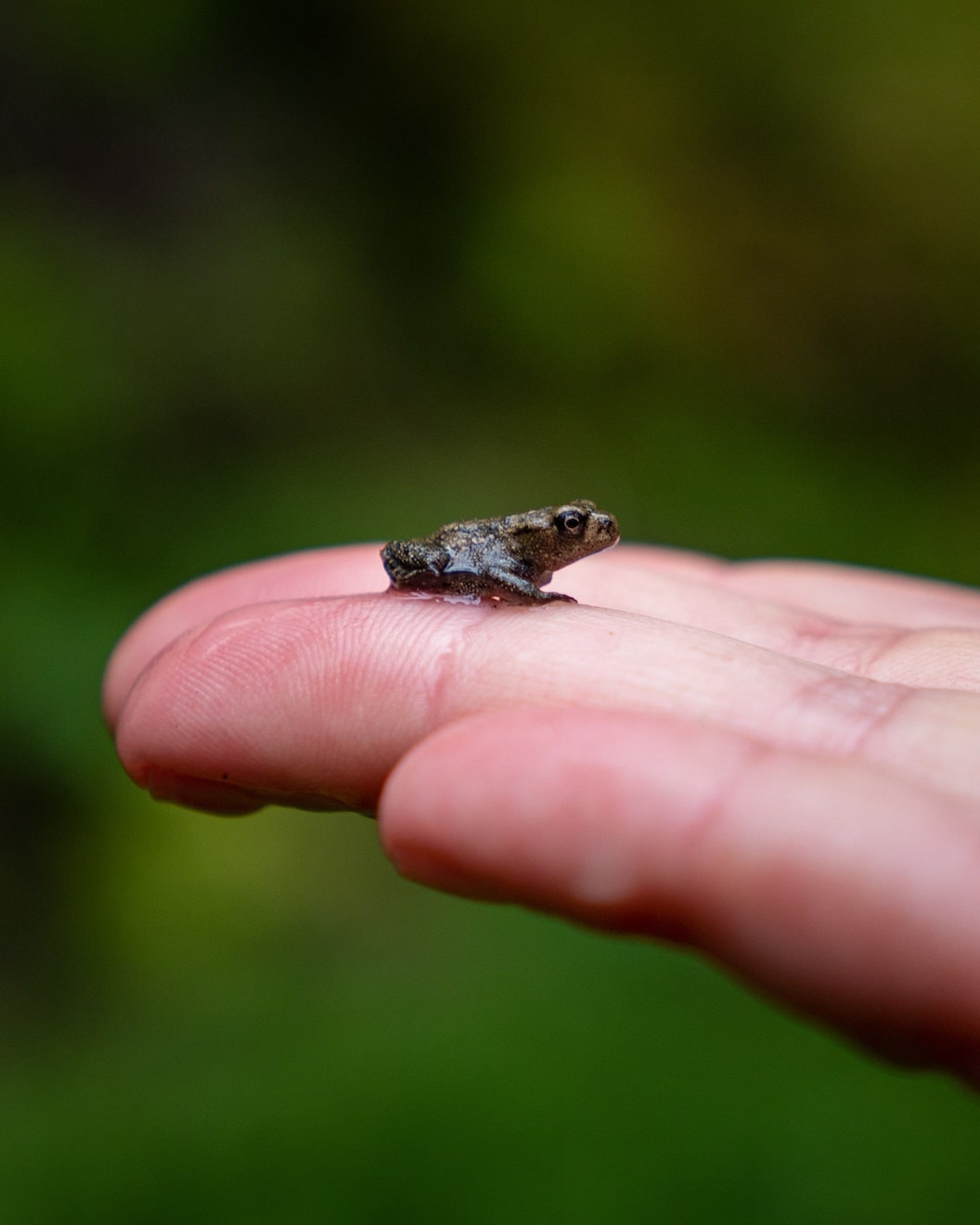
No trip to Glencoe is complete without visiting Ben Nevis. After hiking the first half an hour I left my friends to tackle the rest of the climb and drove with my boyfriend along Glen Nevis for a quieter walk to the Steall Falls. We’d escaped the crowds at Ben Nevis to discover a beautiful valley filled with gorse, wild flowers and cascading streams. I rested and took in the views of the waterfall, leaving the precarious high-wire bridge to my boyfriend.
Being immersed in the sounds, scents and sights of wildlife, rivers and forests was a welcome break from city life. We learned about the history of the area from the little folk museum, the Glencoe Massacre Memorial Site and Signal Rock, which was fascinating.
Our route home took us over the pass of Glencoe and on through Rannoch Moor, where the vast mountain scenery was truly breathtaking – unlike anything I’d seen before, and an unforgettable experience. That drive solidified my desire to return for more exploring over the next few years.
While I’d have loved to reach the summit of those mountains, I’m grateful to have been able to explore the area with my friends while not pushing my body too far. Wild camping, cycling holidays and multi-day mountaineering trips can wait for now.
There are many parallels between living with a chronic illness and choosing not to fly – I’m learning to be content with the things I can do and not constantly think about those I can’t. It’s taken a while to understand that life’s not about doing the most or pushing my body too far, and this also applies to environmentalism – not feeling guilty about not being perfect.
Equally, travel doesn’t mean going the furthest, climbing the highest, or ticking off the most sights – it’s about exploring, learning, being present, and ultimately having fun wherever you are. Perhaps this is something my illness is teaching me, and it applies to my interest in environmentalism too. It’s about reframing expectations to enjoy what IS possible without resenting the restrictions.
After all, what could be better than the beauty of nature in the company of friends?
